The Riotoro Onyx Power Supply Review: 650W & 750W Tested
by E. Fylladitakis on March 23, 2017 10:00 AM ESTExternal Appearance
We should start by mentioning that, with the exception of the stickers and one extra connector at the front of the 750W model, there are no physical differences between the 650W and the 750W version of the Onyx. Externally, the Riotoro Onyx is a simple-looking PSU. The chassis has been sprayed with a matte black paint and the finish is good, but the paint itself is highly prone to fingermarks.
Stickers with the company logo, the series and the power rating of the PSUs can be found on the sides of the chassis. One large sticker with the electrical certifications and specifications of the PSUs take up most of the top. A metallic round badge with the company logo decorates the center of the finger guard, right above the fan’s engine.
The front side of the PSU is mostly plain, with the connectors for the modular cables taking about a third of it. It can be noticed that the 650W version has one connector less than the 750W version, which is meant for the extra Molex or SATA cable. Note that both units have two PCI Express cable connectors, but the 650W version offers only two PCI Express 6+2 pin connectors instead of four.
Internal Design
The similarities of the two PSUs are internal as well, with both units using exactly the same fan for cooling. It is the Yate Loon Electronics D12SM-12 fan, a simple 120 mm model with a sleeve bearing engine. These fans tend to be relatively quiet but are not specifically reputed for their longevity.
Both of the units are based on exactly the same platform, and the OEM behind it is the Chinese company 'Great Wall'. Great Wall is not a regular manufacturer into the North American and European markets, but a few companies have entrusted their middle range units to them, including OCZ and Corsair. Since some of Riotoro’s employees come from Corsair, it is no surprise that they approached Great Wall to be the OEM of their own units.
Other than the ratings of the used components, there are no vital differences between the two units. The main difference is the size of the passive PFC components, the filtering inductor and the two capacitors: where the 650W model employs two Nippon Chemi-Con 450V/180μF capacitors, the 750W model uses two Rubycon 450V/220μF capacitors. On the secondary side both units are using a mix of Rubycon and Nippon Chemi-Con electrolytic capacitors. Nippon Chemi-Con supplies all of the solid-state capacitors as well.
Riotoro Onyx 750W - Internal View
The platform is a relatively simple design, with a half-bridge primary inversion on the primary side of the transformer. On the secondary we can clearly see the DC-to-DC converters for the minor rails. These are not cutting-edge technologies but, taking into account the quality of the used components as well, the Onyx units should be getting a better efficiency certification, suggesting improper optimization on the OEM’s behalf. The heatsinks are of a reasonably large size, considering the efficiency and power ratings.
Riotoro Onyx 650W - Internal View


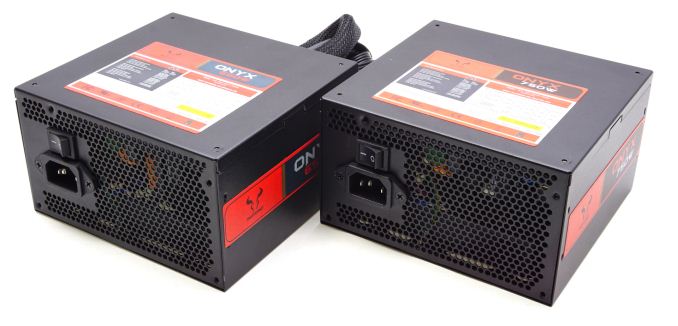
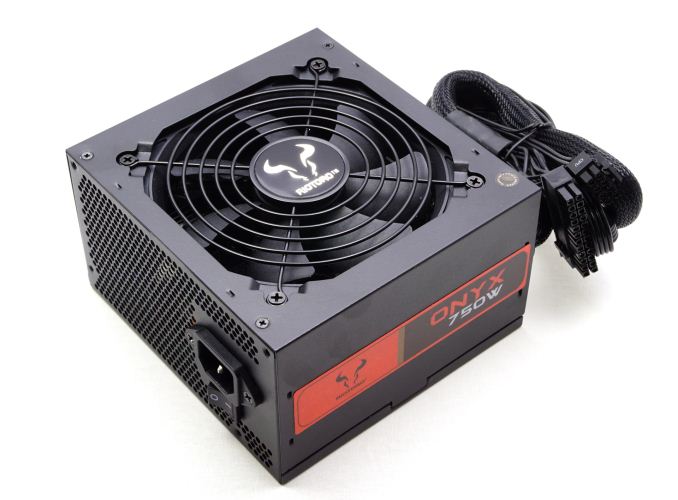
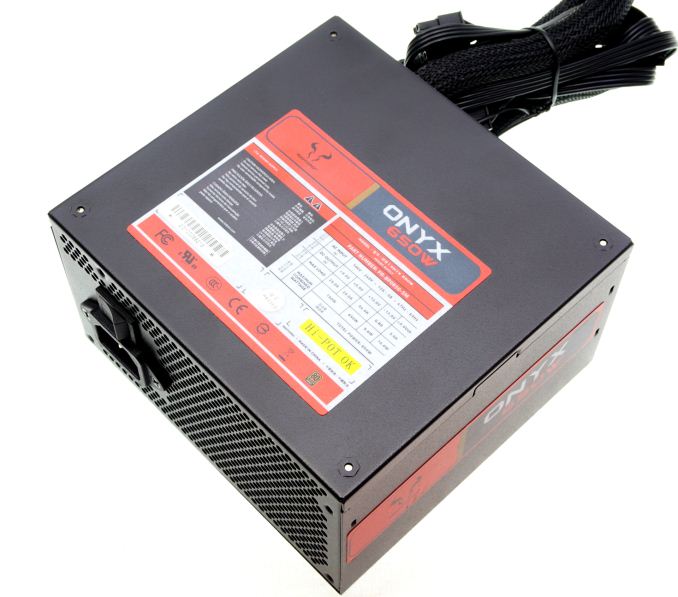
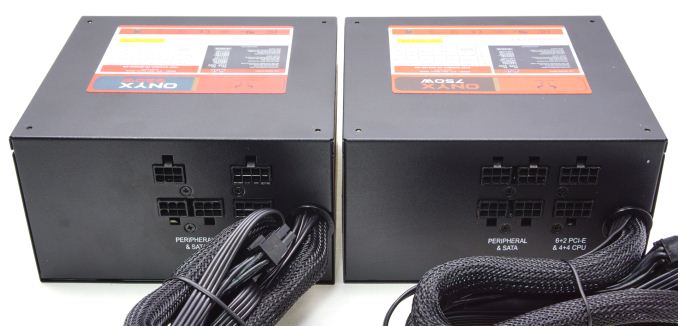
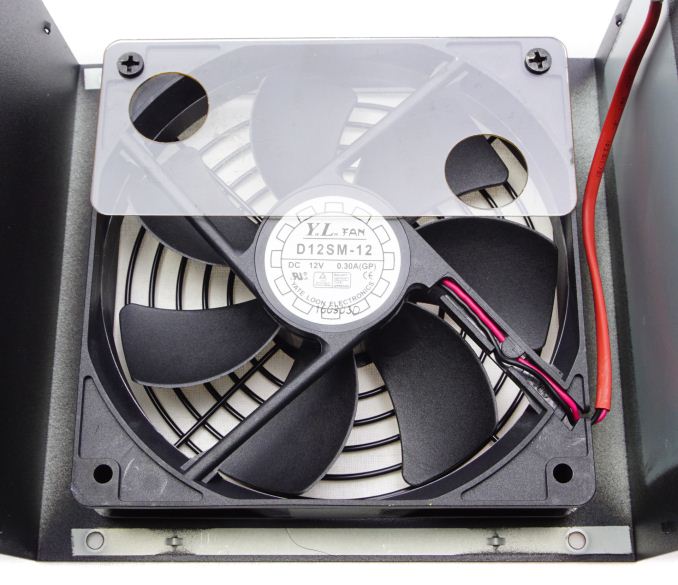
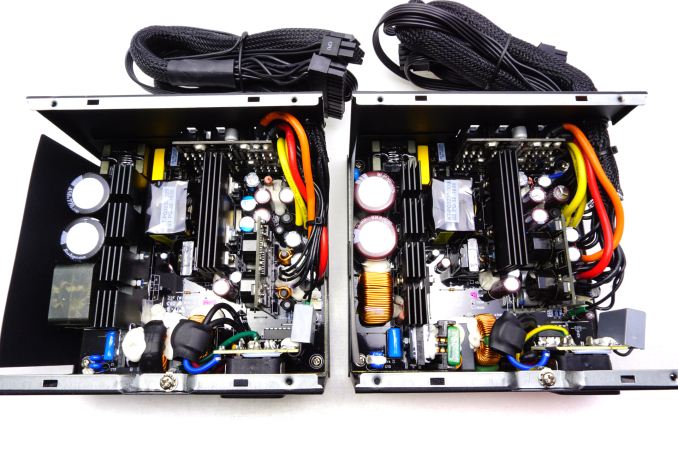


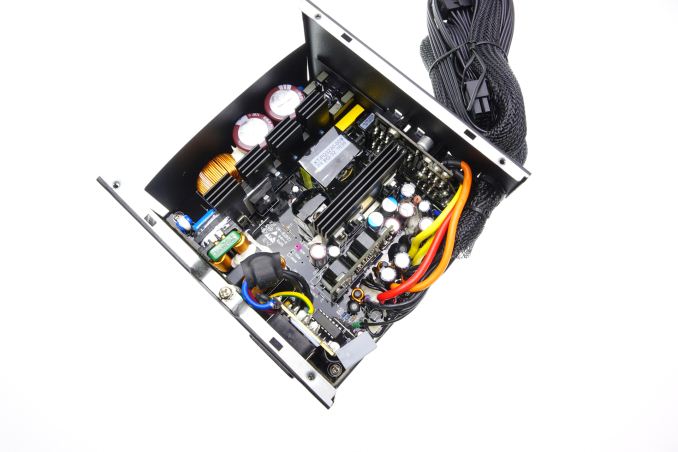
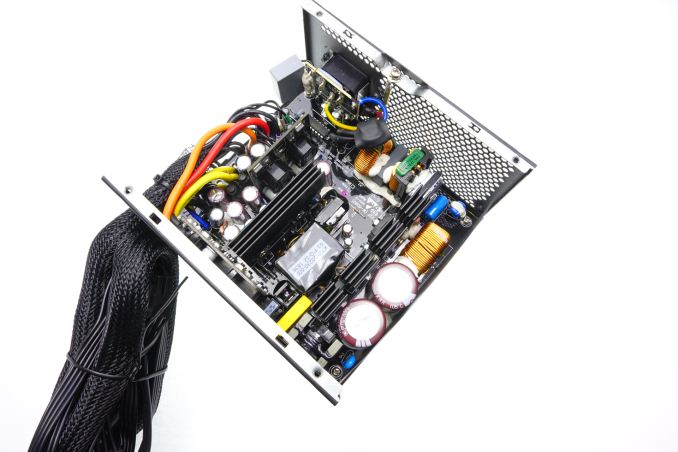








32 Comments
View All Comments
kn00tcn - Wednesday, March 29, 2017 - link
it's a percentage, wait til you find out how much is wasted when idling on a 1500w psuShowtime - Saturday, April 22, 2017 - link
When I first looked the these units, I thought of my old Corsair HX620 because these look identical to me with the red stickers on black. I remember when those old 620's being one of Corsairs 1st higher end PS, and mines still runs. Hopefully these units will be similar, and provide some good competition.